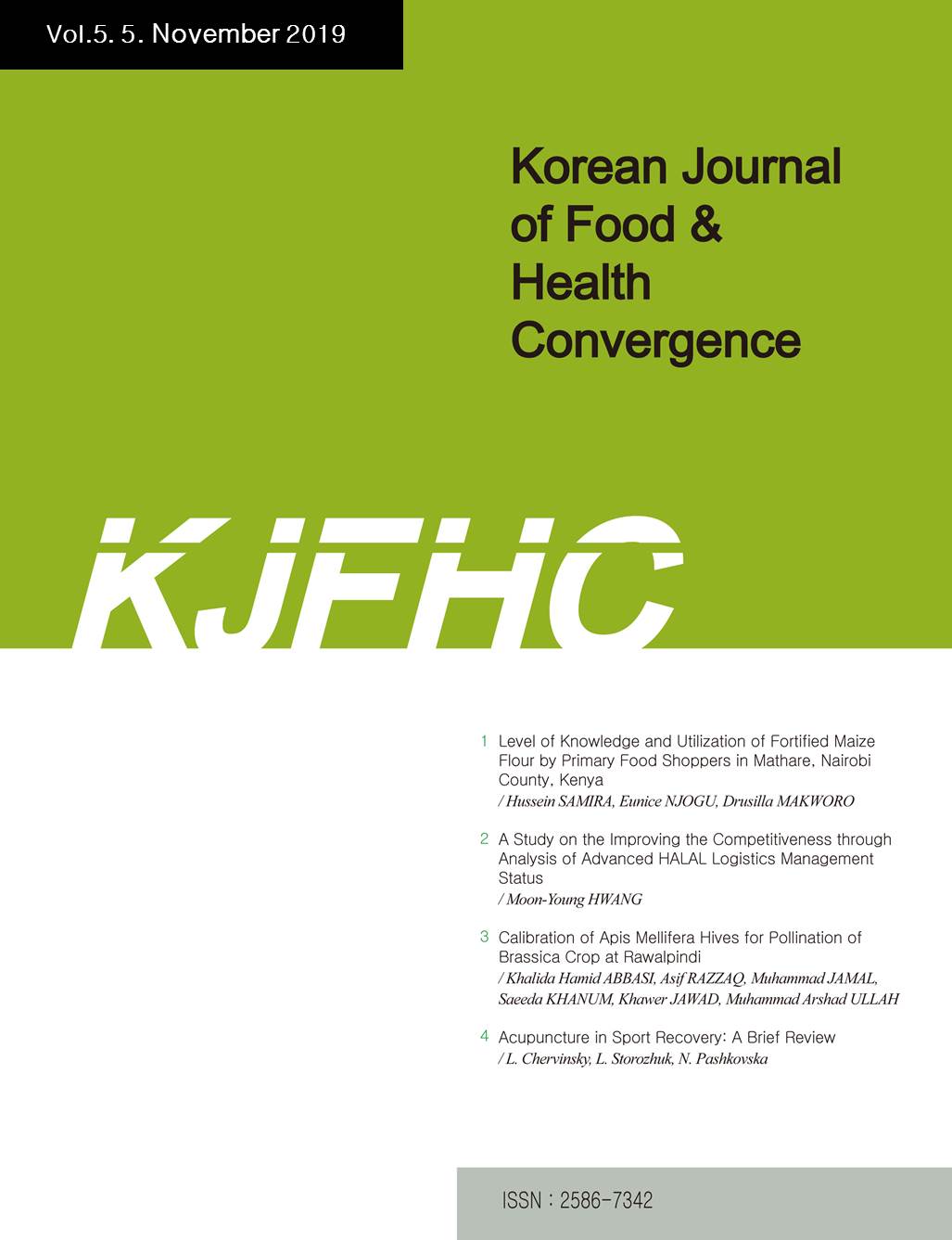 E-ISSN : 2586-7342
E-ISSN : 2586-7342
Vol.4 No.4
Abstract
To determine the effect of Vitex doniana (leaves stem and root bark) ethanolic extracts on lipid profiles of Poloxamer 407 (P407) induced hyperlipidemic and normal rats. Fifty four mixed sex rats weighing 100-200g were divided into nine groups comprising six animals per group. At the end of the 21 day, the animals were sacrificed and blood sample were collected for determination of serum levels of: Total cholesterol (TC), Triacylglycerides (TAG), High-density lipoprotein cholesterol (HDL-c) and Low-density lipoprotein cholesterol (LDL-c). The studies showed that all induced treated groups significantly (P<0.05) lower serum levels of TC, TAG, LDL-c and significantly (P<0.05) increased HDL-c when compared to the P407 induced hyperlipidemic control. The normal treated groups showed no significant (P>0.05) difference in the serum levels of TC, TAG, LDL and HDL when compared to the normal control group. Calculation of atherogenic risk predictor indices of the induced treated groups showed that all the extracts significantly (P<0.05) lowered the LDL-c/HDL-c, log (TAG/HDL-c) and significantly (P<0.05) increased HDL-c/TC ratio when compared to the P407 induced hyperlipidemic control group. The atherogenic risk predictor indices of normal treated groups showed no significant difference (P>0.05) in LDL-c/HDL-c, Log (TAG/HDL-c) and HDL-c/TC ratio when compared to the normal control group. The study demonstrates the phytotherapeutic effect of Vitex doniana (leaves, stem and root bark) ethanolic extract in poloxamer 407 induced hyperlipidemia.
Abstract
Capsicum frutescen is known in Sudan, is one of the most commonly used pepper species in cooking and in Sudanese folk medicine. The present study was conducted to investigate antimicrobial (bacteria and fungi) and cytotoxicity (Brine Shrimp Lethality Test) of methanolic extract of Capsicum frutescen (fruits). The extract have been tested in the present study to investigate the in vitro potential effects against Gram positive, Gram negative bacteria and fungi. The selected organisms were Staphylococcus aureus, Escherichia coli, Pseudomonas aeruginosa, Klebsiella pneumonia and Candida albicans using the cup plate agar diffusion method. The methanol extract of Capsicum frutescen (fruits) exhibited inhibitory effects against Escherichia coli with zone of inhibition (23 mm) and Klebsiella pneumonia with zone of inhibition (17 mm). The phytochemical screening revealed the presence of Tannins, Saponin, Alkaloids, Anthroquinoles and Terpenoids. The Cytotoxicity of methanolic extract of Capsicum frutescens was <TEX>$LD_{50}$</TEX> <TEX>$64.68{\mu}g/ml$</TEX>. The activity and presence of compounds known to be biologically active are a validation for the use of Capsicum as a food ingredient and as a therapeutic element of traditional medicine.
Abstract
Proteins play a key role in many functions such as metabolic activity, differentiation, as cargos and cell fate regulators. It is necessary to know about the markers involved in male fertility in order to develop remedies for the treatment of male infertility. But, the role of the proteins is not limited to particular function in the biological systems. Some of the proteins act as ion channels such as catsper and proteins like Nanos acts as a translational repressor in germ cells and expressed in prenatal period whose role in male fertility is uncertain. Rbm5 is a pre mRNA splicing factor necessary for sperm differentiation whose loss of function results deficit in sperm production. DEFB114 is a beta defensin family protein necessary for sperm motility in LPS challenged mice where as TEX 101 is a plasma membrane specific germ cell protein whose function is not clearly known u to now. Gpr56 is another adhesion protein whose null mutation leads to arrest of production of pups in rats. Amyloid precursor protein role in Alzheimer's disease is already known but it plays an important role in male fertility also but its function is uncertain and has to be considered while targeting APP during the treatment of Alzheimer's disease. The study on amyloid precursor protein in male fertility is a novel thing but requires further study in correlation to alzheimer's disease.
Abstract
To have more insight into the nature of plant, plant scientists carry out phytosociological studies on such plant species. The phytosociological studies on Tridax procumbens. Linn was carried out at Imo State University, Owerri, Imo State between the months of July and September, 2018. Tridax procumbens Linn grows abundantly in the areas under tropical climate and supported by a sandy-loam soil. Morphological features showed a range of variations. Phytosociological investigation showed a Tridax- Mitracarpus-Digitaria plant community. Tridax procumbens was positively associated with Digitaria horizontalis, Mitracarpus scarber and Vernonia cinera. The Inter-relationship of T. Procumbens was thus determined. This study therefore is a contribution to the general ecology of the plant. Phytosociological studies helps plant scientist to have more knowledge into the nature of plant species. This study is a contribution to the general ecology of the plant Tridax procumbens. The study also shows that it has close association with mitracarpus Scarber and Digitaria horizontalis. More work should be carried out to find out if these plant species flower and produce seeds at the same time or not.
